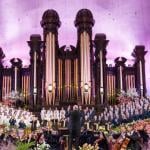At SBL last year I picked up David deSilva’s Sacramental Life: Spiritual Formation through the Book of Common Prayer (IVP, 2008).
The book obviously has a devotion character where deSilva is thinking through a holy and upright life with the Bible in one hand and the Book of Common Prayer in the other. This spiritual exercise led deSilva to reflect on the sacraments and their theological import (especially the themes and ideas tied up in them). The first part of the book focuses on baptism (‘walking in the newness of life’), then the holy eucharist (‘nourishment for the new life’), and then two lesser, but significant sacraments of marriage (‘partnership for the new life’) and Christian burial (‘the gate of eternal life’).
I spoke with deSilva at SBL about this book and he mentioned his concern that many m0dern Christians are so driven by ‘authentic’ worship that they do not care to learn from certain Christian traditions (like Anglicanism) that can offer mature and rich theological resources. As a Methodist who grew up in the Episcopal church, deSilva still appreciates ‘the liturgies of the Book of Common Prayer’ because they ‘gave me a language and a context for encountering God in my youth that continue to be essential vehicles for my own spiritual formation; (11).
This was a delight to read. deSilva reads both the BCP and the Bible closely, drawing together important themes and ideas. It would work well for spiritual formation groups in seminary/college or at church.
Methodologically, I think that deSilva’s work fits well into a modern re-appreciation for liturgy. This dovetails nicely with the work of ritual studies (see Catherine Bell) which has attempted to understand the social significance of ritual performance. There may also be a bit of this in speech-act theory as well. It is no surprise, then, that many evangelical independent churches are becoming more traditional by including creeds and even hymns in their worship! Many Christians are also finding independent Bible churches to be somewhat vapid in that they have little or no historical and traditional grounding such that, if the talented one-man-show pastor leaves, the show is over and the church wilts.
As an a methodist who has spent time working and worshiping in Presbyterian, Brethren, Nazarene, and Episcopal churches, I have benefited from each of these and their unique traditions.
This book is highly recommended!











